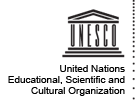The South Caucasus is comprised of three diverse countries, each facing different challenges becoming democratic and open societies where political processes represent the needs of constituents. The media in this region is largely limited to the traditional forms of print, TV, and radio. Because media organizations rely on these models that are no longer sustainable because of the internet and technology, they are susceptible to the financial control and bias of political parties and special interest groups, which in turn influences the content and quality of their journalism. Audiences in...
IPDC Project scope: National
Myanmar was once described as the site of “one of Asia’s—if not the world’s—longest ethnic-based conflict since the country’s independence in 1948”. There are 135 distinct ethnic groups throughout the country, and recent studies have cited media as a “driver of conflict” due to inaccurate reporting, misinformation, bias and preference for conflict stories.
News media could play a key role in informing and educating different ethnic groups about their commonalities and differences, leading to greater understanding and tolerance. Dialogue between media practitioners, bloggers...
Zambia’s growing community media sector, which boasts 60 radio stations and 6 print entities, is regarded as an important tool for community and grassroots development. These media outlets are responsive to their audiences and have established themselves as frontline sources of information and platforms of communication for the communities in their coverage areas.
However, community media journalists are increasingly subject to incidents of intimidation and harassment and there have also been arrests and domestic censorship of some online newspapers. Most of these journalists...
Gender equality is one of the greatest challenges facing journalists in Thailand. According to the Global Report on the Status of Women in the News Media (2011), women are underrepresented in most management and newsgathering positions in the Asia Pacific, with women holding just 13% of senior management positions. Women’s salaries are generally lower and qualified women face a glass ceiling due to factors such as institutionalized prejudices.
This project will apply the Gender-Sensitive Indicators for Media (GSIM) to Thai PBS in order to encourage Thai PBS - and...
One of the major resolutions of Zimbabwe’s 2012 Media Stakeholders Conference was the need for the media to play a central role in promoting awareness about, and responses to, climate change. A lack of journalists trained to understand climate and environmental issues has resulted in minimal reporting on climate change and a lack of sufficient information to promote public efforts of mitigation and adaptation.
This project will address the need to educate Zimbabwean journalists on climate change by training a group to report on weather, agro-economics and tourism news as well...
In the last 20 years, Vietnam’s media landscape has expanded rapidly in terms of platforms, publications, journalists and audience. The media’s role as a government watchdog has increased and it now plays an important role in the fight against corruption. However, despite laws purportedly protecting the freedoms of speech and of the media, journalists cannot work safely and independently without fear of being threatened or even killed.
This project aims to promote the safety of journalists by developing:
(i) a so-called Guidelines for Peer Assistance for the Safety of...
The Ethiopian media is a very recent phenomenon, mainly consisting of state-controlled radio and television. Addis Ababa City Administration Community Media (FM 96.3) is one of the few community radio stations in the country. It serves 1.5 million people across a 105 km radius, providing 18 hours of daily transmission in Amharic, the official language of Ethiopia. However, its journalists lack professional skills.
The proposed project aims to address this gap by training volunteer journalists, reporters, editors and technicians at FM 96.3 to be able to produce high quality...
Although China’s media sector has grown explosively over the past few years, the legal framework under which the media operates remains underdeveloped. It is therefore essential to pay more attention to the development of China’s legal framework for media and freedom of expression.
In 2013, a round of the annual Price Media Law Moot Court Competition was successfully held in China. Established in 2008, this Programme aims to foster interest in, and informed debate about, international law governing freedom of expression issues. It serves as a training exercise, requiring...
Fesmedia Africa's 2010 media barometer reveals that the journalism training at the University of Antananarivo does not include refresher programmes even though graduating students experience difficulties due to pedagogical shortcomings and gaps in the content of the initial training programmes. Furthermore, among the media professionals, the vast majority (more than 700) are trained on the job. One consequence of this is the plethora of articles based on sensationalism and a dull report of facts. This project aims to strengthen the capacity of a national pool of instructors from 6 public...
Although Mongolia has a plethora of media outlets (more than 400), few are community-owned and run. The internationally-accepted concept of community media is not recognized under Mongolian law and no spectrum is reserved for community broadcasters. It was only between 2011 and 2012 that the first ten self-defined community radios were established (thanks to a UNESCO project). However, a complex license application process hinders spontaneous community initiatives, which may prevent the further growth of community media in Mongolia. Furthermore, most community media outlets are registered...
